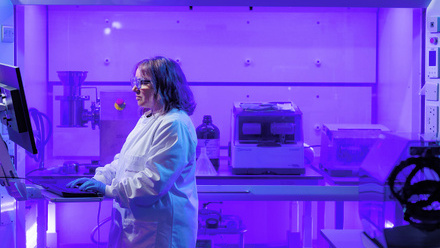Sustainability drives profitability in life sciences manufacturing: Make changes that save money and the planet

In this latest white paper, Dave Cooper, Life Science Projects at Emerson, shows how biomanufacturers can reduce energy use and emissions by improving operational efficiency. With most Scope 1 and 2 emissions coming from manufacturing, sustainability now directly influences cost, compliance and competitiveness. Dave outlines practical ways digital tools and smarter process control can deliver fast, measurable impact without compromising quality.
For biomanufacturers, sustainability is no longer optional—it directly impacts profitability, regulatory compliance, and competitiveness. With up to 90% of Scope 1 and 2 emissions originating from energy consumed during primary manufacturing, the pathway to decarbonisation runs through operational efficiency. We’re here to discuss some technologies which offer biopharmaceutical, vaccine, and cell and gene therapy manufacturers rapid, measurable returns while addressing sustainability mandates without compromising product quality or safety.
I’d like to give you a little taste of the type of insight you will read about in the longer whitepaper, insight we have attained through working with hundreds of manufacturers globally on these exact improvement projects. Improvements that manufacturers have made global standards.
Steam generation and distribution
Steam systems supporting process heating and sterilisation represent significant energy expenditure. Analysis of global databases shows 70% of control loops may operate out of specification due to field issues and poor tuning — a problem easily resolved through modern control systems as they monitor loop health and alert operators to inefficiencies. Even simpler than this, however, non-intrusive monitoring devices detect steam trap failures immediately; compare this to the typical quarterly manual surveys, and first-year cost savings alone can prove the investment. Talk about bang for your buck.
Batch failure
In another area, a batch failing specification wastes not only materials but also the substantial energy invested over extended production timescales. Predictive analytics identify early indicators of batch failure, preventing energy waste on products that won't meet release criteria - especially beneficial for the long gestation processes of biologics and vaccine production. Now, this would be a significant step forward on its own, but we can take it a step further. What if you were to be able to monitor key attributes for signs that the batch was going awry? Armed with this data, you would be able to correct the trajectory and save batches which would have otherwise failed. Imagine being able to see when your cells are running low on food.
The BIA Manufacturing Advisory Committee's Sustainability Working Group recognises that collaboration accelerates adoption of sustainable technologies across the sector. By sharing case studies and best practices, the biomanufacturing community can collectively address sustainability challenges while maintaining the stringent quality and safety standards essential for life-enhancing drugs and therapies.
Together, we can deliver fast, significant, and lasting effects on controlling and reducing Scope 1, 2, and 3 emissions. For biomanufacturers, these solutions are not merely environmental initiatives—they represent strategic investments that reduce operating costs, improve regulatory compliance, and enhance competitive positioning in an industry increasingly focused on sustainable production practices.
Want to continue this conversation? Join us at bioProcessUK 2025
Meet the biomanufacturing community in person at the 22nd Annual bioProcessUK Conference, taking place on 25–27 November 2025 in Newcastle. Connect with peers, hear the latest insights in bioprocessing, and take part in workshops, networking, and partnering sessions.






